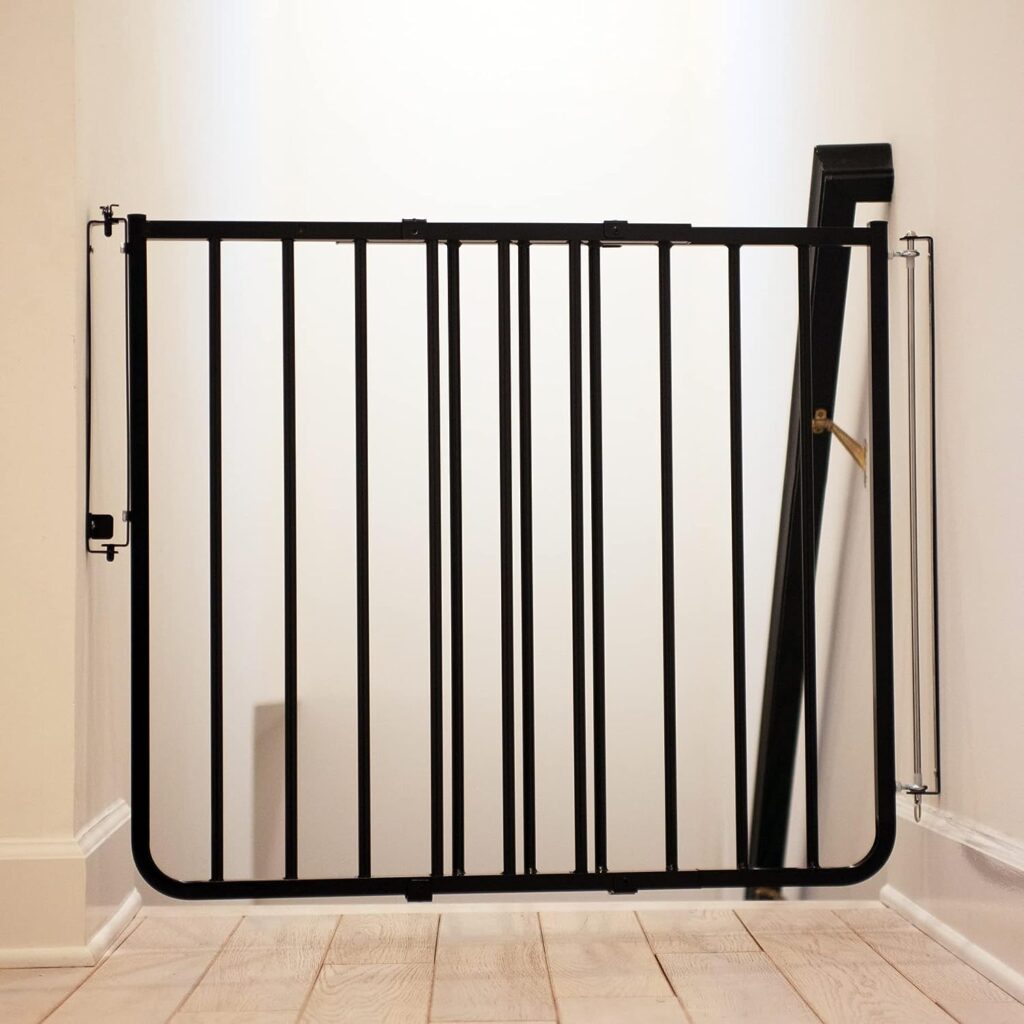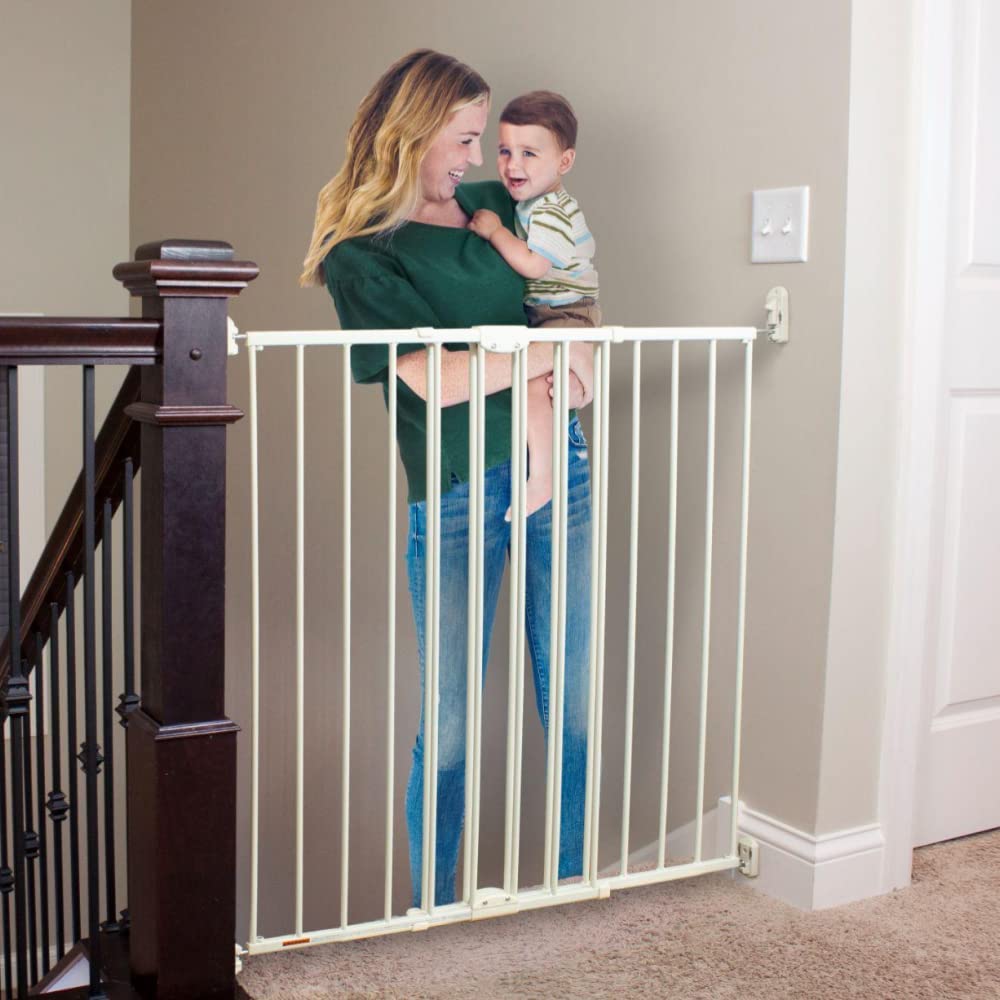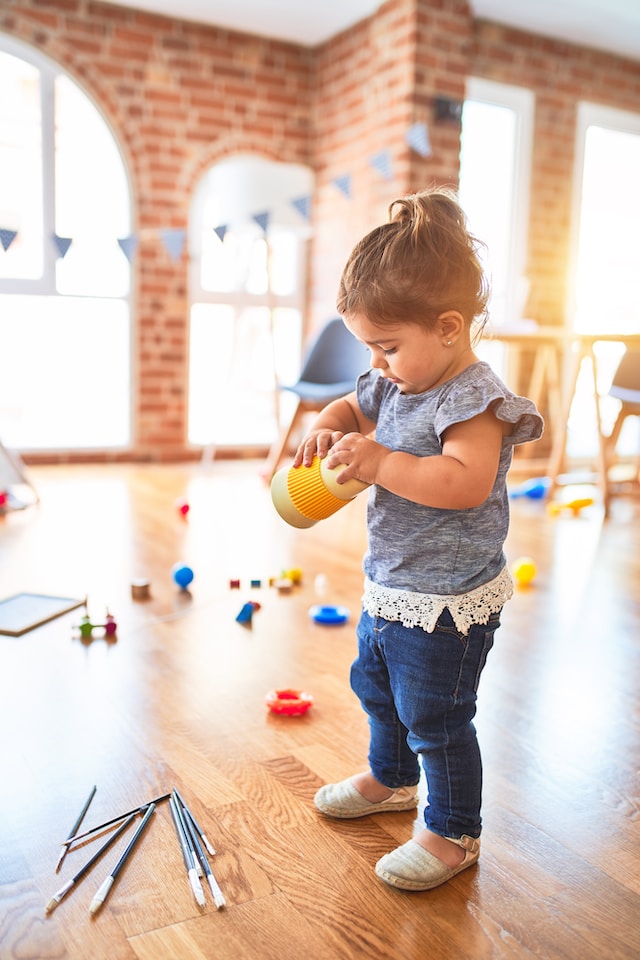Babyproofing your car is super important, because safety doesn’t stop at your front door, does it? When it is time to head out to town, you want to make sure that your child is as safe on the go as they are at home.
Some families spend a fair amount of time in their vehicles, whether during their daily commute to work, school, or daycare, plus add in time spent shopping around town or even on occasional road trips and it becomes obvious that the car is almost an extension of our homes.
Not only should general safety in your car be kept in mind, but there are several specific “best practices” when thinking about children riding in automobiles.
In this article, we will cover what these are and what you can do to decrease the risk of injury and increase the safety of children riding with you.
So let’s get started on the journey of babyproofing your car!
1. Correctly install a properly fitting car seat or booster for each child in the vehicle.
Nothing else about car safety is quite as important as making sure that all children are properly buckled into appropriate car seats. Start with reading the seat’s owner’s manual and learning how to get a correct install with either the vehicle seat belt or with the LATCH system. Make sure that your child is not wearing a bulky coat and that the straps are snug, not twisted, and can’t be pinched between your fingers and that the chest clip is properly positioned.
2. Rear face your child to the limits of their convertible car seat.
Research has shown that rear-facing is the safest way for a baby or toddler to ride in a vehicle. Most states have laws that require rear-facing up to 2 years old, but that is a minimum age and if your child continues to meet the height and weight limits of a convertible seat, we recommend them to stay rear-facing as long as possible. If they run out of leg room it is still just fine for them to rear-face. Simply have them put their legs and feet wherever is most comfortable for them.
3. Never allow a child younger than 13 to sit in the front seat of a vehicle.
The backseat of a vehicle is by far the safest place for children to ride. Please keep in mind, however, that all children should be placed in traditional forward-facing vehicle seats, not side-facing or rear-facing seats or in any seat in the back of a motorhome or RV, which are notorious for collapsing in the event of a crash.
4. Never put a child or a car seat in a seat that has an airbag that is turned on.
If in the rare event a child is riding in the front seat (not recommended for anyone under 13) make sure that there is no airbag in that position or that it has been turned off or deactivated. Little children, car seats, and airbags DO NOT MIX and this combination can be deadly.
5. Don’t be in a rush to graduate your child to a booster seat.
Many parents think of switching to front-facing car seats or booster seats as milestone events in their child’s life. This is not true. No matter how convenient it may seem or how much little Johnny wants to “move up,” best practice is to delay these changes until it becomes a necessity due to the child reaching the maximum limits of height and weight for a 5-point harness.
Don’t equate moving to a booster with the idea that it is better or a big achievement. Encourage your child to be happy with the safety of their car seat for as long as possible.
6. Teach older children how to sit correctly in their booster and use the seat belt properly.
Once it is time to transition your child to a booster, consider using a high-back belt-positioning booster first and use this time period to teach your child how to sit upright at all times while keeping the seat belt snugly across their chest and shoulder.
Never allow your child to push the seat belt under their armpit, dangle sideways, or unbuckle during driving.
7. Use the 5-Step Test to determine if your child is ready to move out of a booster seat.
Once your child is 4’ 9” and typically between the ages of 9-12 (this can vary), they may be ready to ride without a booster seat. The 5-Step Test includes the following:
- Knees bend comfortably at the edge of the vehicle seat and their feet sit flat on floor.
- Butt is all the way back in the seat.
- Lap belt lies low on hips and top of thighs, not on soft part of abdomen.
- Shoulder belt crosses their collarbone and rests lightly on it.
- Tween/Teen can stay seated like this for the entire ride.
8. Never allow a child to ride in a seat that is in a reclined position.
No matter whether your child is riding in a car seat, booster seat, or with just a seat belt, the vehicle car seat should always be in an upright position.
If a seat is not upright, the occupant can experience “submarining” in the event of an accident, in which they slip underneath the belt. In this case, the belt won’t properly restrain them and can cause them to be ejected from the vehicle.
9. Keep older children in the front seat seated as far away from the dash as possible.
If your child is 13 years of age or older and passes the 5-Step Test and they are riding in the front seat, best practice involves having them move the vehicle seat as far back away from the dash as possible. This position will give them the greatest advantage of surviving a car crash.
10. Check all seat belts for fraying, wear, twisting, malfunctioning, and ability to lock.
Periodically you should check your vehicle’s seat belts for any wear or problems. If they are worn badly, twisted, don’t retract properly, or won’t latch, discontinue use and seek repair or replacement. Also, become familiar with how your seat belts lock.
Some need to be pulled out all the way and slowly retracted to trigger the auto-lock mechanism. If you are installing a car seat, you will either need your vehicle seat belt to be in a locked position or use a “lock off” feature on your car seat.
If you have neither option, you will need to install a “seat belt locking clip” that clips the lap belt to the shoulder belt in order to keep the seat belt from shifting.
11. Determine that each child has proper head and neck support.
If your child is front-facing, you will need to determine that they have proper head and neck support. This usually means that they are either sitting in a highback booster seat or that there is a properly adjusted vehicle headrest in position.
Make sure that the tops of the child’s ears are below whatever support they have.
12. Make sure all unoccupied car seats and booster seats are strapped firmly into place.
Even if no one is riding in a car seat or booster, they need to be secured to the vehicle at all times. If not, they can become airborne in the event of a crash and cause major damage to the occupants of the vehicle.
13. Do not attach aftermarket products to (or use with) any car seats in your vehicle.
There are virtually no aftermarket products that are approved for use on, in, or under a car seat. This is because all car seat crash tests are conducted with just the seat and accessories that are sold with the seat and not with any other items that could affect the performance of the seat. This includes clip-on toys, seat mats, headrests, etc…
14. Do not attach any aftermarket products to the vehicle’s seat belts.
Seat belts are designed to work alone or in conjunction with properly installed car seats and booster seats, but are not designed to have anything added to them.
By altering them with cushions or padding or by routing them in a way they are not designed for could cause them to fail in the event of an accident.
15. Remove anything from the interior of the car that could become a projectile.
For most of us, this is a really hard one! Especially considering that, as parents, it is hard to have a clean car!
But essentially anything beyond soft stuffed animals, blankets, and coats could fall into this category, including purses, diaper bags, phones, tablets, shoes, etc. If the item can create damage if thrown forcefully, either secure it in a compartment or clean it out of the vehicle.
16. Carefully choose non-projectile “safety” items, such as baby mirrors and sunshades.
This category of items is unique because some parents specifically purchase devices to make baby’s ride more comfortable, secure, and safe.
Yet, if those items could become projectiles, then their purpose would be defeated. For this reason, seek out versions that can be properly secured or that don’t have any hard parts.
17. Store tools, groceries, luggage, and other loose items in the trunk of the vehicle.
On the same note, sometimes you have to carry items in your car that aren’t necessarily safe in the main cab. If your car has a trunk, use it for storage.
Even if your vehicle doesn’t have a trunk use the backend area to store these items in order to compartmentalize them away from the children and other occupants of the vehicle.
18. Carry emergency supplies, such as blankets, water, and a first aid kit in your car.
You always want to be ready in the event of a breakdown or other emergency. For this reason, make sure that you have a supply of items (stored in the trunk!) that you can use to take care of your children if you find yourself in a compromised situation.
19. Keep your car properly maintenanced, including your tires, brakes, and lights.
All the safety devices in the world are only as effective as they can be if your car itself remains a safe vessel. Don’t drive around on old or bald tires (car tires expire after 6 years even if they still have plenty of tread!).
Get your brakes and ball joints checked regularly for wear. And make sure that all of your lights and other systems are working properly.
20. Don’t drive distracted or give in to road rage.
Keep your kids safe by being a safe driver. Be a defensive driver and don’t let others ruffle your feathers on the road. Keep calm and pull over if you need to deal with an upset child.
Definitely never text and drive or try to juggle too much while you are behind the wheel. It is a huge responsibility to transport children in a moving vehicle and it is up to you to make sure that you get to your destination as safely as possible.
21. Avoid allowing your child to eat while you are driving if no adult is in the backseat.
If your child begins to choke, you may be unaware until it is too late. Choking is oftentimes not accompanied by coughing sounds, so this can be a real hazard.
If you must give your child food on the go, make sure that it is soft, easy to chew, or otherwise not likely to be a risk.
22. Activate window locks and child door locks in the back seat.
Kids have been known to open windows and doors both while driving and while stopped. Thankfully, most cars are equipped with locks that you can control from the front.
Don’t risk your child escaping by making sure the child safety locks are activated at all times, whether driving or while parked. Don’t drive with the windows down, if at all possible. In the event of a rollover, open windows can prove deadly if a child falls out.
23. Do not drink and drive or smoke in a car that transports children.
Never mix alcohol and driving, whether alone or with children in your care. That is a deadly combination! Also, secondhand smoke is very dangerous to the health of others. Keep your car a smoke-free zone so that little ones are not exposed.
If your child is traveling with someone else, make sure that they also will not be drinking alcohol or smoking in the car.
24. Never leave your child unattended in a vehicle.
Small children should never be allowed to roam around a vehicle whether it is being driven or if it is parked. Kids have been known to knock a car out of park or to release a brake handle. To avoid problems like this, don’t allow this type of behavior.
Furthermore, you should never walk away from your vehicle if small children are inside, even if they are properly restrained. Cars can quickly become too hot (or even too cold), creating a dangerous situation.
Plus, it is illegal in most areas and leaving your children unattended may create a lot of trouble for you.
25. Use a reminder device or system to help you never forget baby in the backseat!
Never say never! The phenomenon of distracted parents accidentally forgetting their baby in the car seat has become a very real problem in our country and affects even the most devoted and loving parents.
It is not something that just happens with neglectful parents. Don’t let your child become a statistic! Implement a system that forces you to always double-check the back seat or purchase an alarm or device that alerts you to the presence of your child.
Conclusion:
Making your vehicle as safe as possible should be one of your goals as a parent. Childproofing your car through these many ways provides you the opportunity to reduce your child’s risk of danger and death while traveling in our fast paced world. It feels good knowing that you are covering your bases with all the best practices known. And this is where we like to say:
When we know better, we do better!
Happy Babyproofing Your Car!








